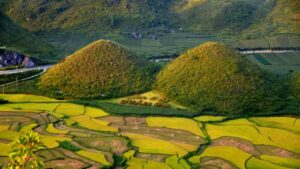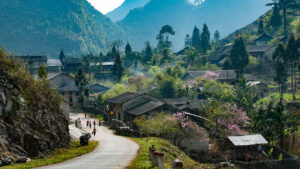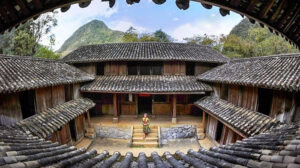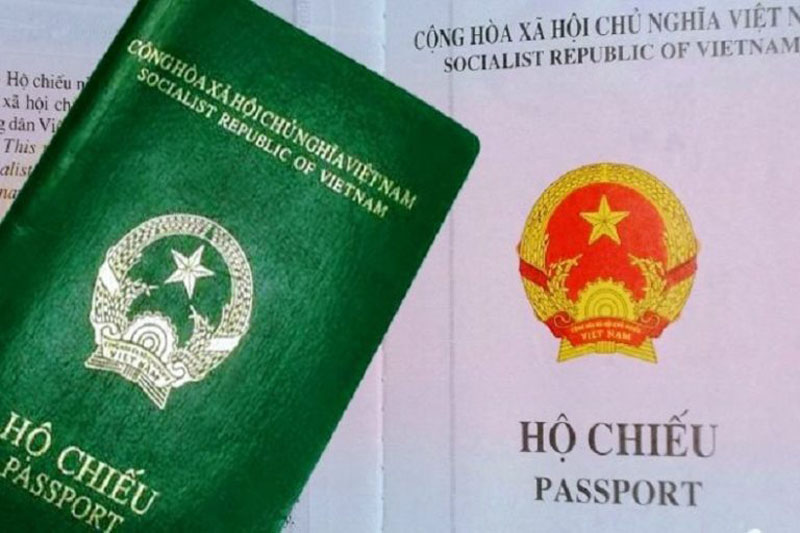Ha Giang is a province in the extreme north of Vietnam, known as the “Dong Van Stone Plateau”. It is famous for its majestic and pristine natural scenery, with towering limestone mountains, lush green valleys, winding and winding mountain passes, and unique ethnic minority villages.
Hà Giang is one of the poorest provinces of Vietnam. Traditionally, the vast majority of its economic activity revolved around agriculture and forestry, but in recent years, there have been attempts to establish a manufacturing industry.
Ideal time to travel to Ha Giang: From September to April of the following year is the best time to visit Ha Giang, when the weather is cool, not too hot and not too cold.
Some of the famous tourist attractions in Ha Giang:
Quan Ba Heaven’s Gate: This place is known as “heaven on earth” with the majestic and breathtaking scenery of the Northwest mountains.

Dong Van Market: The market meets every Sunday morning, where ethnic minorities in Ha Giang trade and socialize.

Lung Cu Flagpole: The northernmost point of the Vietnamese Fatherland, where visitors can admire the red flag with a yellow star flying on top of the mountain.

Dong Van Stone Plateau: This place is recognized by UNESCO as a World Natural Heritage Site with its pristine and unique natural scenery.

Meo King’s Palace: The ancient residence of the Meo King Vuong Chinh Duc, one of the most powerful kings of this land.

Nho Que River: The jade green river flows through towering limestone cliffs, creating an extremely impressive landscape.

Happiness Road: The winding mountain pass winds through ethnic minority villages, offering visitors an extremely interesting discovery experience.

How to get there?
- Bus: The bus journey takes around 6 – 8 hours, depend on which part of Hanoi, and costs between $15 and $30 USD for a one-way ticket
- Car: Special option Private car with driver is a great way to see Vietnam at your own pace. The car journey costs between $80 and $150 USD for a one-way ticket








